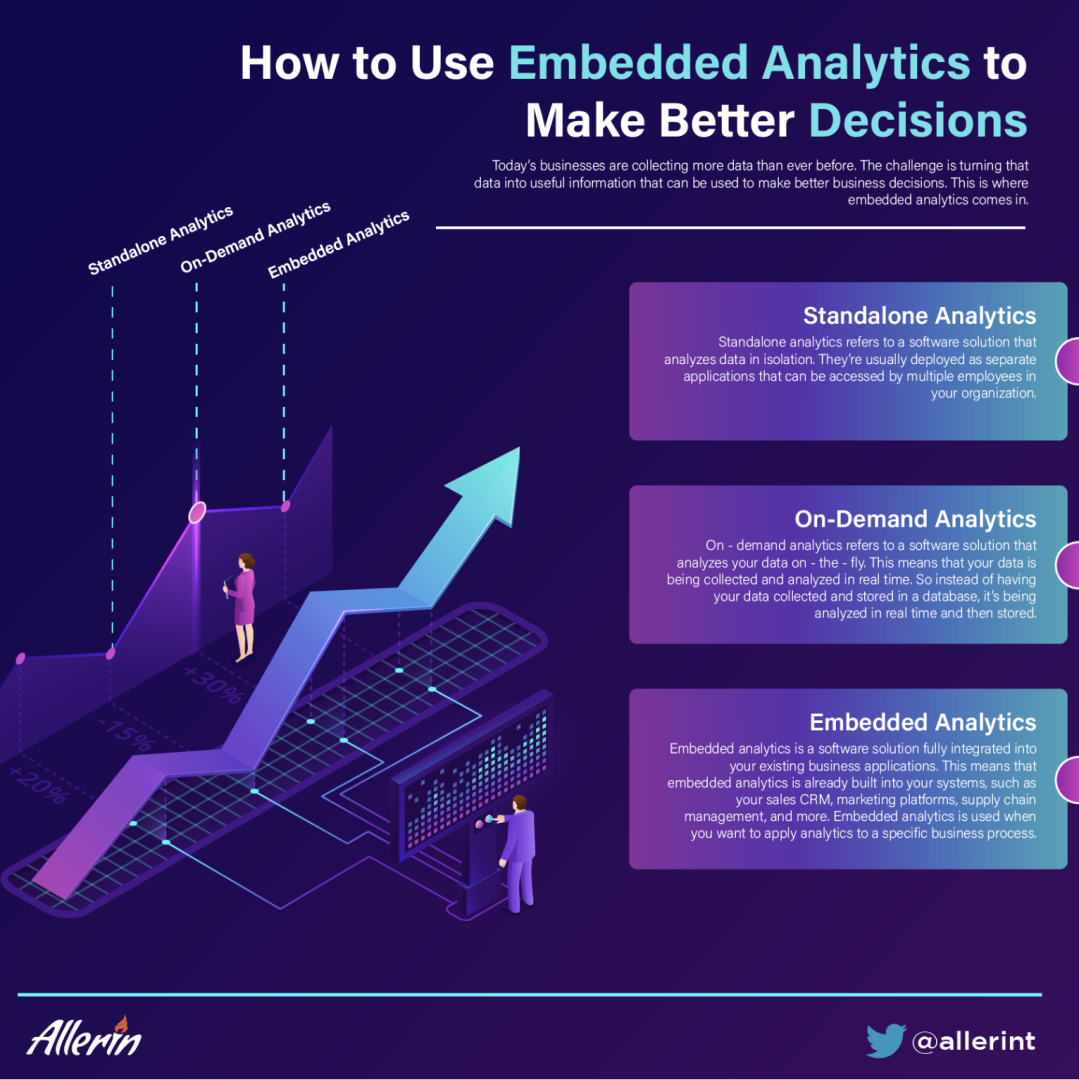OTHER
How to Use Embedded Analytics to Make Better Decisions

Today’s businesses are collecting more data than ever before.
The challenge is turning that data into useful information that can be used to make better business decisions. This is where embedded analytics comes in.
Analytics, whether they be standalone tools or software with built-in analytics, are a great way to unlock insights from your data. They help you discover patterns, detect outliers and uncover hidden insights so you can take actionable steps forward as a business. However, not all analytics solutions are the same. They come in different shapes and sizes. There are many options for getting the right analytics for your company and its individual analytical needs. So before we dive into what embedded analytics means for your business, here’s a brief overview of the various types of analytics available:

STANDALONE ANALYTICS
Standalone analytics refers to a software solution that analyzes data in isolation. They’re usually deployed as separate applications that can be accessed by multiple employees in your organization. Standalone analytics are most often used when companies already have a data analytics platform in place. In this case, a standalone analytics solution can be easily plugged into your existing platform. They’re also a good option if your company has its own data analytics specialists or a dedicated data analytics team. Standalone analytics can be used for a wide range of analytical needs, including predictive analytics, optimization and ROI analysis, risk and fraud detection, sentiment analysis, and more.
ON-DEMAND ANALYTICS
On-demand analytics refers to a software solution that analyzes your data on-the-fly. This means that your data is being collected and analyzed in real time. So instead of having your data collected and stored in a database, it’s being analyzed in real time and then stored. On-demand analytics are usually accessed through the cloud, so they’re a great solution for companies that don’t have their own data analytics team or are short on IT resources. They’re also a good option if you don’t have an existing data analytics platform into which you’re plugging standalone analytics. On-demand analytics are used for a wide range of analytical needs, including predictive analytics, optimization and ROI analysis, risk and fraud detection, sentiment analysis, and more.
EMBEDDED ANALYTICS
Embedded analytics is a software solution fully integrated into your existing business applications. This means that embedded analytics is already built into your systems, such as your sales CRM, marketing platforms, supply chain management, and more. Embedded analytics is used when you want to apply analytics to a specific business process. For example, you might want a solution that helps you forecast the demand for your products based on sales trends, customer behavior, and product data. Or perhaps you want to optimize your supply chain by identifying the best path for shipments. Embedded analytics are used for a wide range of analytical needs, including predictive analytics, optimization and ROI analysis, risk and fraud detection, sentiment analysis, and more.
So as you can see, there are various types of analytics available. You can choose between standalone and embedded analytics depending on your company’s needs. No matter which type you choose, analytics is a great way to unlock insights from your data and make better business decisions.

















